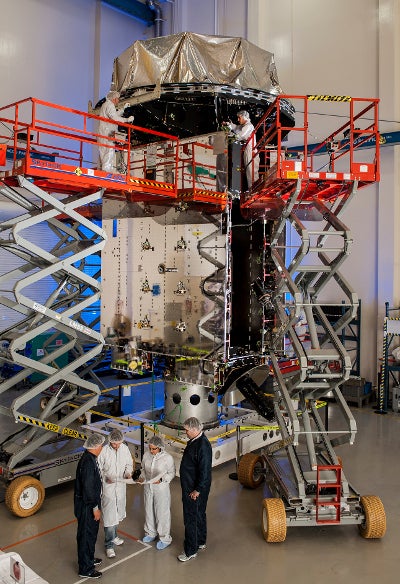
The US Navy’s fourth mobile user objective system (MUOS-4) has entered first system testing phase following completion of key components installation onboard the satellite.
Lockheed Martin has successfully integrated communication system module and multi-beam antenna, which includes 16 ultra-high frequency (UHF) antennas for distributed, global communications coverage.
Following successful completion of system trials, the MUOS-4 satellite will undergo environmental testing.
Lockheed Martin Narrowband Communications mission area vice-president Iris Bombelyn said the MUOS-4 team would continue to focus on reducing risk and maintain efficient operations to deliver a satellite vehicle based on the experience gained from the development of the first three vehicles.
"Our execution on the ground is complemented by our performance on orbit, where our first satellite is already in position and performing exceptionally," Bombelyn said.
A next-generation narrowband tactical satellite communications system, MUOS has been designed to provide enhanced communications for troops on the move, while replacing existing ultra-high-frequency follow-on (UFO) system.
The MUOS constellation comprises four satellites and an on-orbit spare, as well as four ground stations, to provide users with worldwide coverage and the ability to connect anywhere.
Launched in February 2012, the first MUOS satellite is already operational with the US Navy, while the second MUOS satellite is currently under final preparations for its scheduled launch in July.
The third MUOS satellite is undergoing environmental testing, while the full operational capability of the MUOS constellation is scheduled to be achieved in 2016.
Lockheed is the prime contractor and system integrator, while the US Navy’s Program Executive Office for Space Systems and its Communications Satellite Program Office are responsible for the MUOS programme.
Image: Lockheed Martin-built fourth MUOS spacecraft at its facility. Photo: courtesy of Lockheed Martin Corporation.





